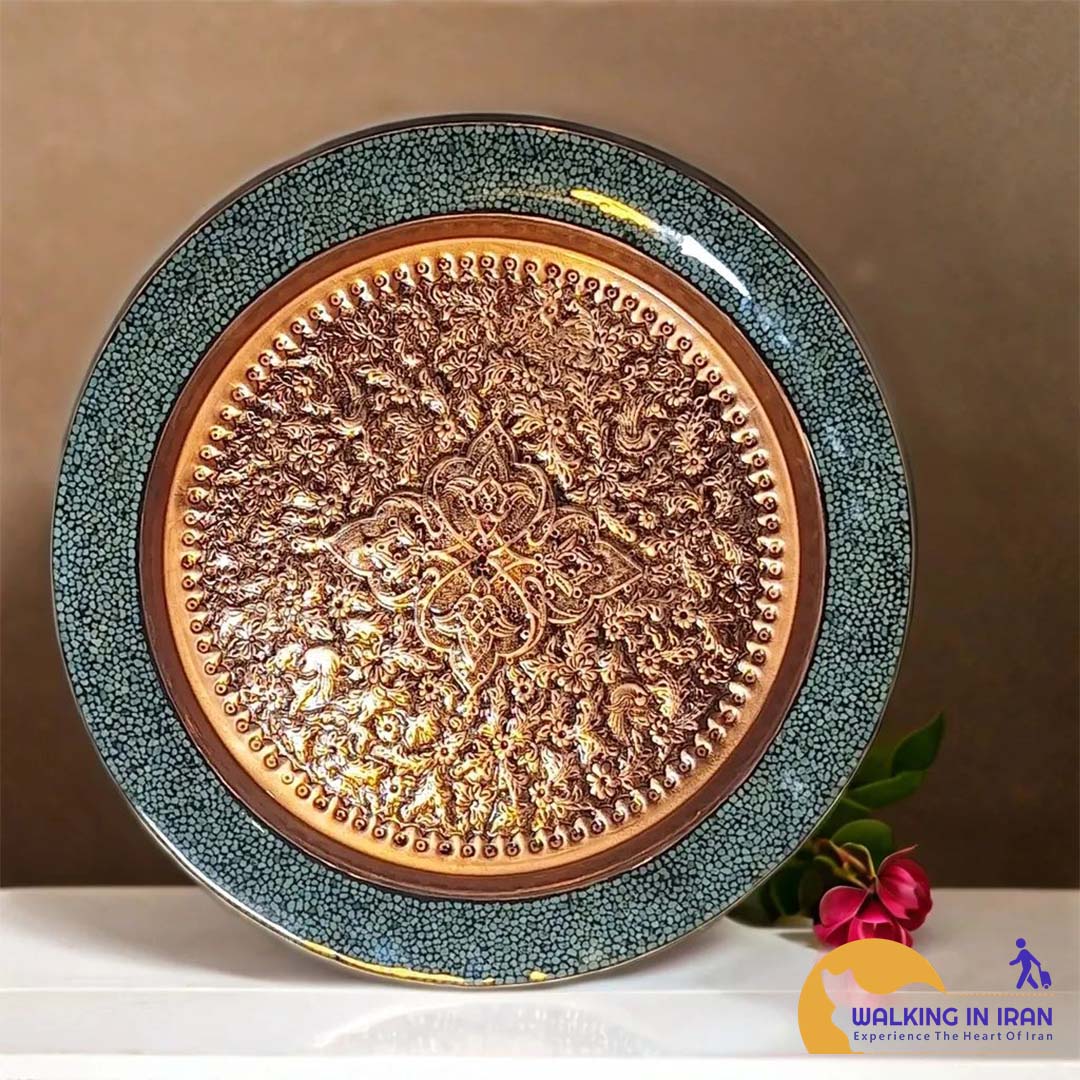The art of turquoise carving in Iran: a combination of celestial stone and metal
Turquoise engraving is one of the most delicate and beautiful traditional Iranian arts, in which turquoise stone is installed with special elegance on the surface of metals such as copper, brass, silver and gold. This art is a combination of nature and art, which has become one of the most prominent handicrafts of Iran over the years.
The history of turquoise
The roots of turquoise in Iran go back to the Safavid era. At that time, turquoise was known as the national stone of Iran and it was used to decorate dishes, ornaments, swords and other valuable objects. Isfahan is known as the main center of this art and Isfahan artists have reached world fame by creating unique works.
Steps of turquoise
- Surface preparation: First, the desired metal surface is smoothed and polished.
- Designing the design: the desired design is drawn on the surface of the metal.
- Drilling holes: using special tools, small holes are created on the surface of the metal.
- Installation of turquoise: small pieces of turquoise are placed in the holes and fixed using special glue.
- Polishing: The work surface is polished to increase its shine and beauty.
The importance of turquoise in Iran - Preserving cultural identity: Turquoise painting is one of the symbols of Iranian cultural identity and helps us to communicate with our roots.
- Development of handicrafts: Turquoise embroidery, as one of the most valuable handicrafts of Iran, contributes to the development of the economy and job creation.
- Aesthetics: Due to its elegance and complexity, turquoise products add beauty and originality to the space.


